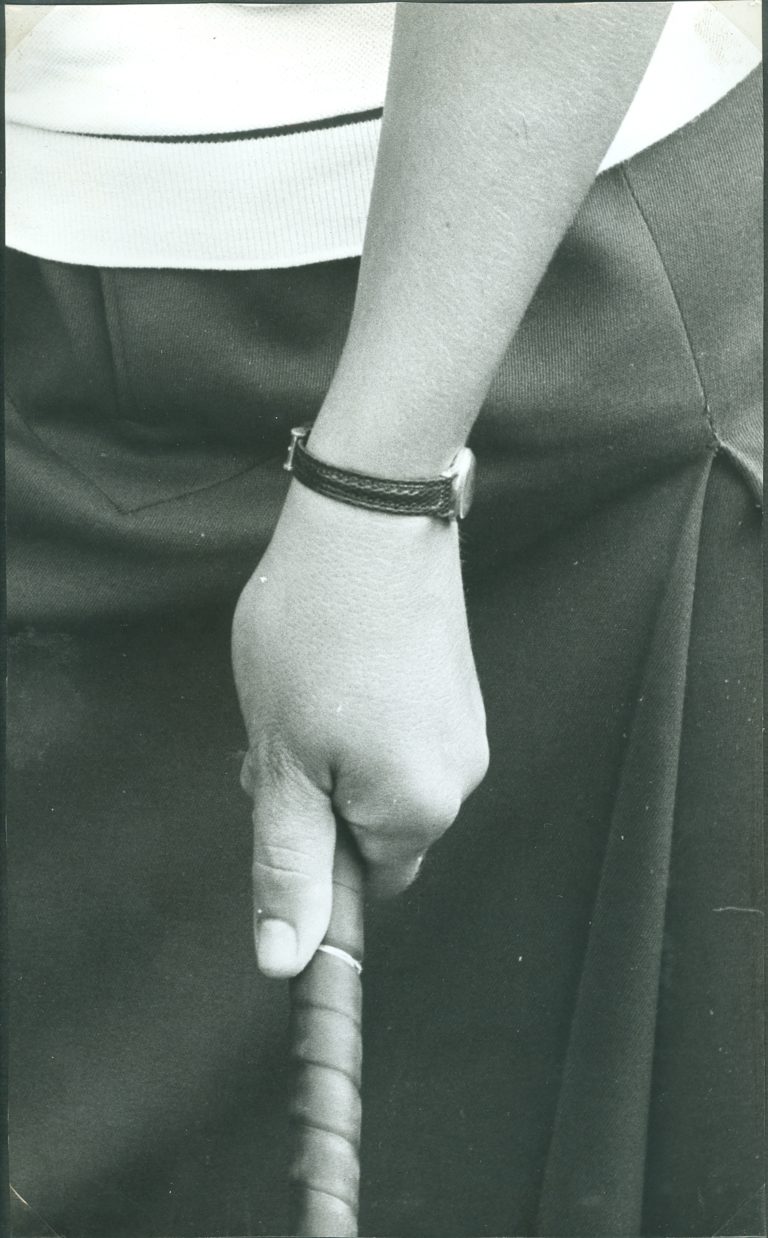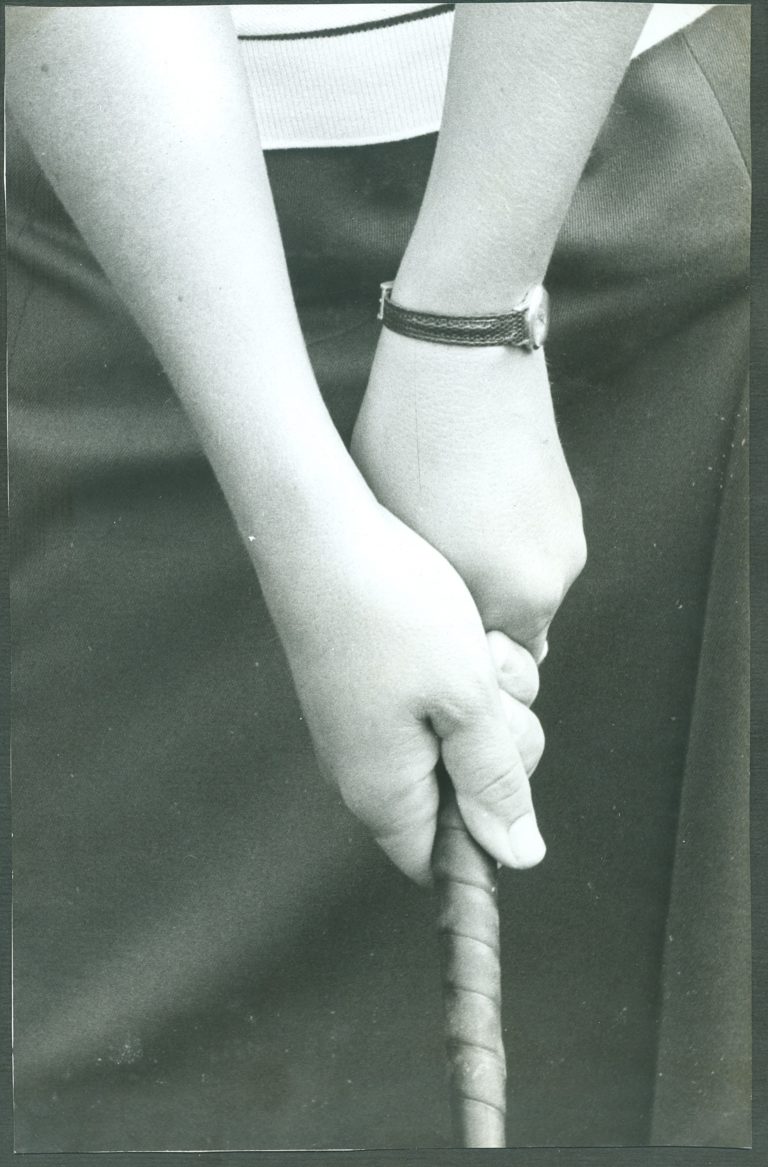I would like to insert here some basic advice which is essential for me.
The first will be for small approaches. As much as possible, keep the same club for all your approaches. Please do not take the Sand Wedge for approaches to the edge of the green as its weight makes it very difficult to control and increases the risks and effects of a very slight error. I said to take the same club: the reason is quite simple. The more you see a friend, the more you know him. So take the Pitching Wedge and put it to work. If you want the ball to lift and it to stop relatively quickly, aim the ball towards your left foot and raise your club rather on the outside, you will see how high your trajectory can take. On the contrary, if you want to do a roll approach, which in my opinion is the safest, most efficient and should always be executed if there is room to do it, you have to address the ball in the middle of the feet or almost on the right foot, move the hands forward towards the hole so as to form an angle which will not change during the gesture and thus will avoid as much as possible the flicks of the wrists and the errors. It is obvious that for all approaches, as for the other shots, it is vital not to look up!
On the 1/2 strokes of Pitching Wedge About 30 yards from the green, try to set your club up in the lane first, then squarely on the outside, then well on the inside. You will see the effect this has on the trajectory of your ball. In the latter case (on the inside), as long as you have opened your wrists (or the clubface which is the same thing) while climbing inside, it is likely that you will have performed a superb sock! It is by experimenting with these different climbs that in the future you will be able to better understand the gesture and make the ball what you want, because playing good golf is not only to make a perfect shot but to know how to make the ball go. a location with the desired effect and trajectory. It also allows you to know how to correct on your own a fault that suddenly appears in the middle of a course, especially in this case, the sock. It is therefore a question of climbing at least in the line of the trajectory of the ball or towards the outside and keeping the club face perpendicular to the trajectory that is, by having the impression of closing it. To realize well, raise the club very slowly looking at the face before making the movement to hit the ball.
For puttingI am always amazed to see the difficulties of great players and especially average players, because it is understandable that a player is nervous when a certain number of thousands of francs or a title is at stake but all alone in part friendly it does not seem not explainable! This is my way of seeing things: the simpler the gesture, the more possibilities we have to repeat it, so let's see this gesture. First, try to forget what you are doing now.
The following advice is in part taken from a book written by Horton Smith which has helped me a lot. To start, take your club between your two hands and with your palms parallel, then close your fingers as in your usual grip or by reversing the superposition of the left index finger which will give you more firmness so as not to break your wrists. Now let's think about the position in front of the ball. It seems logical to place yourself like other shots in general with the ball in front of the middle of the feet but rather to the left and with the feet aligned in the same direction as the desired trajectory of the ball. You should not be too far from the ball because, when bending down to address the ball, the eyes should be above the line of that trajectory. I always noticed that when I imagined a slope from right to left I was too far from the ball and, on the contrary, when I imagined a slope from left to right, I was too far above. the ball. I'm saying that I was imagining myself because the ball ended up on that side of the hole several times in a row. However, when I was just over the ball, I gained confidence and entered a high percentage of putts up to three meters. After that is much more difficult !!
The putter should be perpendicular to the trajectory and rest in its natural position so don't have putters lying down too much as you will have a hard time keeping your eye over the ball.
Concerning movement,it is about, always in the spirit of simplifying the gesture as much as possible, of going up and finishing in the line of the desired trajectory of the ball but, and this is very important, you have to keep the face of the putter perpendicular to the trajectory. This will require a very slight movement of the wrists on the way up and the opposite movement at the end of the gesture. You will easily discover this movement of the wrists on the putting green. To train you I recommend what I myself have practiced since the age of 12 or 13: place 6 tees stuck in the surface of the green: 2 on each side of the ball, 2 to 25 centimeters in the trajectory from the club to the back (i.e. uphill) and the last two between the first two and the hole about 25 centimeters also. By placing your putter against these tees, you will verify that the top ones aim about 2cm to the right of the hole and the lower ones, i.e. those closest to you, aim 2cm to the left of the hole. It is obvious that you will have taken to start training a putt without slope and not too long (2 to 3 meters maximum). Take your courage with both hands (at the same time as your putter!) And eight good balls because it is the touch that is important and if, because of the balls you change your touch each time it is not useful to practice. Put a long, long time, often, very often. This is much more important than your big game, first because you are playing a lot more putts than other strokes, but it will give you confidence for the rest of your game to know that you will be entering the majority of your putts. less than 2 meters.
After these two important technical tips, knowing that you almost always take 2 shots from the edge of the green will let you attack the flags. As Lally Segard, captain of our 1964 world champion team, taught me, "If you don’t attack the course, the course will attack you" !!
Another tip from Lally is for putting in foursomes: "Imagine there is a basin around the hole and, when you putt a long putt try to stay in that basin, it will help your partner enter the second putt." Finally, an advice from another great champion, Brigitte Varangot: "When you putt, try to put your hands in the hole". This expression, very colorful, helps to attack the bottom of the holes.



